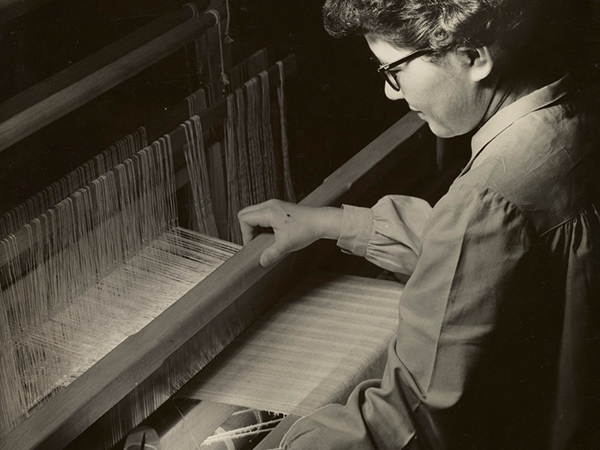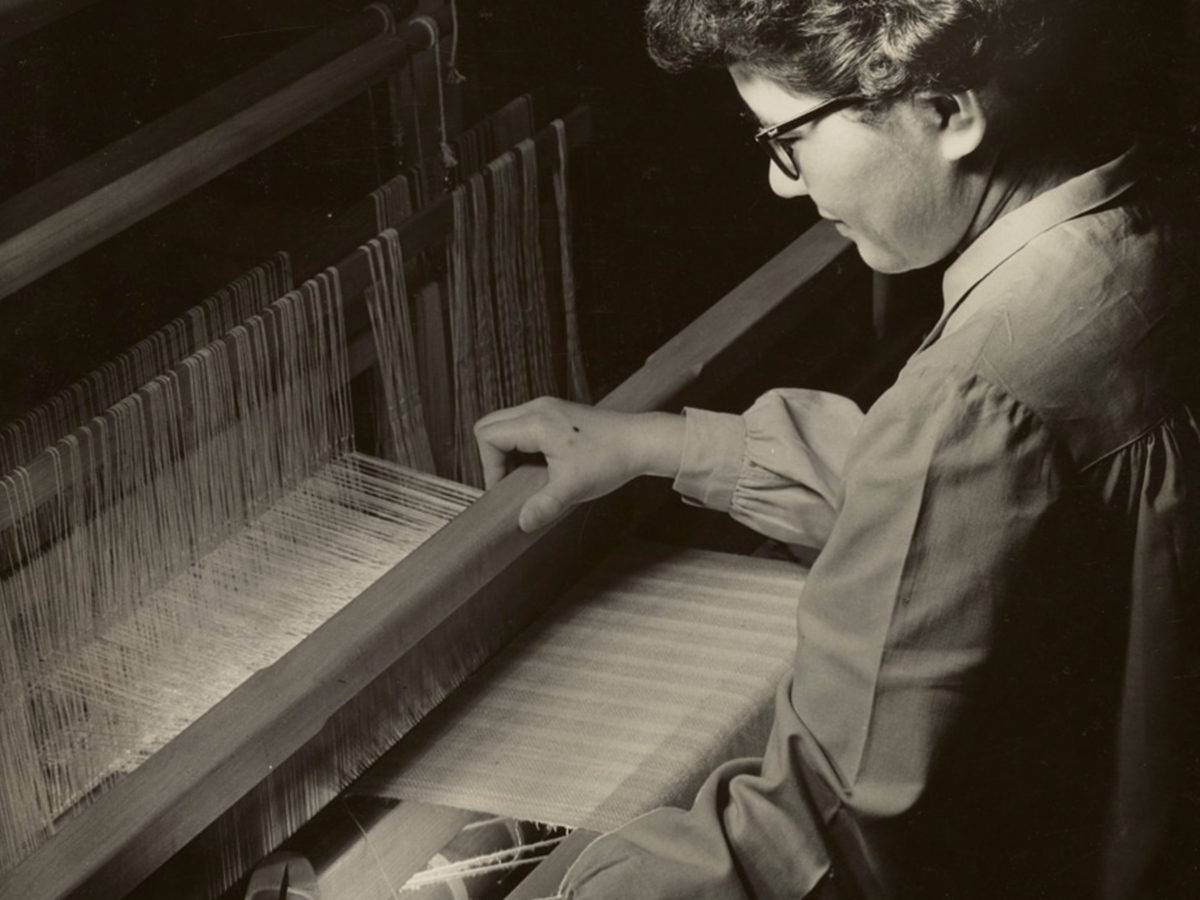Activity
Kay Sekimachi: Oral History
Lesson: Interview a grandparent, parent, guardian, or community member about his or her childhood, immigration story, family traditions, or celebrations.

Kay Sekimachi
We can learn a lot about someone if we take the time to ask the right questions. Thanks to the Smithsonian Institution, the Archives of American Art has recorded oral histories of a number of artists, including Kay Sekimachi. In her interview, we learn about Sekimachi’s childhood as a first-generation Japanese American, her parents’ relationship to Japan, her experience while incarcerated, and the Japanese influence on her own artwork.
In this activity, you will interview a grandparent, parent, guardian, or community member about his or her childhood, immigration story, family traditions, or celebrations.
California Content Standards
History and Social Science (Grade 2)
HSS 2.2.1 Students differentiate between things that happened long ago and things that happened yesterday. 1. Trace the history of a family through the use of primary and secondary sources, including artifacts, photographs, interviews, and documents. 2. Compare and contrast their daily lives with those of their parents, grandparents, and/or guardians. 3. Place important events in their lives in the order in which they occurred (e.g., on a timeline or storyboard).
English and Language Arts (Grades 9–12)
ELA 2.3 Apply appropriate interviewing techniques.
ELA 2.3.a Prepare and ask relevant questions.
ELA 2.3.b Make notes of responses.
ELA 2.3.c Use language that conveys maturity, sensitivity, and respect.
ELA 2.3.d Respond correctly and effectively to questions.
ELA 2.3.e Demonstrate knowledge of the subject or organization.
ELA 2.3.f Compile and report responses.
ELA 2.3.g Evaluate the effectiveness of the interview.
ELA 1.6 Develop presentations by using clear research questions and creative and critical research strategies (e.g., field studies, oral histories, interviews, experiments, electronic sources).
Materials
List of possible interview questions (download PDF from sidebar above)
Internet access
Vocabulary
Celebration: (noun) the act of performing publicly and according to certain rules; the act of observing in some special way.
Ritual: (noun) an established form for a ceremony.
Tradition: (noun) the handing down of information, beliefs, or customs from one generation to another.
Immigration: (noun) the action of coming to live permanently in a foreign country.
Issei: (noun) a Japanese immigrant to North America
Nisei: (noun) a second-generation Japanese American
Procedure
Elementary and Middle School
- Make a list of potential interviewees. The person that you interview should be one or, ideally, two generations older than you and have insights into either your family or community history and traditions.
- Contact the list of potential people you would like to interview. Ask for their permission to be interviewed. Also, coordinate when and how you will conduct the interview: in-person, over the phone, through video chat, etc.
- Listen to an example: Visit the Archives of American Art website to access Kay Sekimachi’s interview and listen to the first five minutes. Notice how the interview begins and how the interviewer and interviewee introduce themselves.
- Read over possible questions. Select six or eight questions that you want to ask and organize questions in an order that makes the most sense to you. Be sure to begin the interview following the Sekimachi example.
(Tip: It’s best practice to ask questions that follow a person’s timeline chronologically, from their childhood to the present.) - When the time of the interview comes, ask your questions. Be sure to take notes during the interview for future reference.
- When the interview ends, thank the person you interviewed.
- On the same day as the interview or the next, write a summary of your interview and reflect on what you learned about the person, yourself, your family, or your community.
High School and Beyond
- Make a list of potential interviewees. The person that you interview should be one or, ideally, two generations older than you and have insights into either your family or community history and traditions.
- Contact the list of potential interviewees. Ask for their permission to be interviewed. Also, coordinate when and how you will conduct the interview: in-person, over the phone, through video chat, etc.
- Once you have selected an interviewee, do some research. Find at least two scholarly articles that can apply to the person or community’s history.
- Listen to an example: Visit the Archives of American Art website to access Kay Sekimachi’s interview and listen to the first five minutes. Notice how the interview begins and how the interviewer and interviewee introduce themselves.
- Read over possible questions. Select four or five questions that you want to ask, and create two or three questions that are specific to the person or to your family’s history or traditions. Organize questions in an order that makes the most sense to you. Be sure to begin the interview following the Sekimachi example.
(Tip: It’s best practice to ask questions that follow a person’s timeline chronologically, from their childhood to the present.) - When the time of the interview comes, ask your questions. Be sure to take notes during the interview for future reference.
- When the interview ends, thank the person you interviewed.
- On the same day as the interview or the next, write a summary of your interview and reflect on what you learned about the person, yourself, your family, or your community. Incorporate how your scholarly articles shaped your understanding of the interview, learned history, or traditions.
For more lesson plans based on Kay Sekimachi, visit this artist’s teacher packet.





